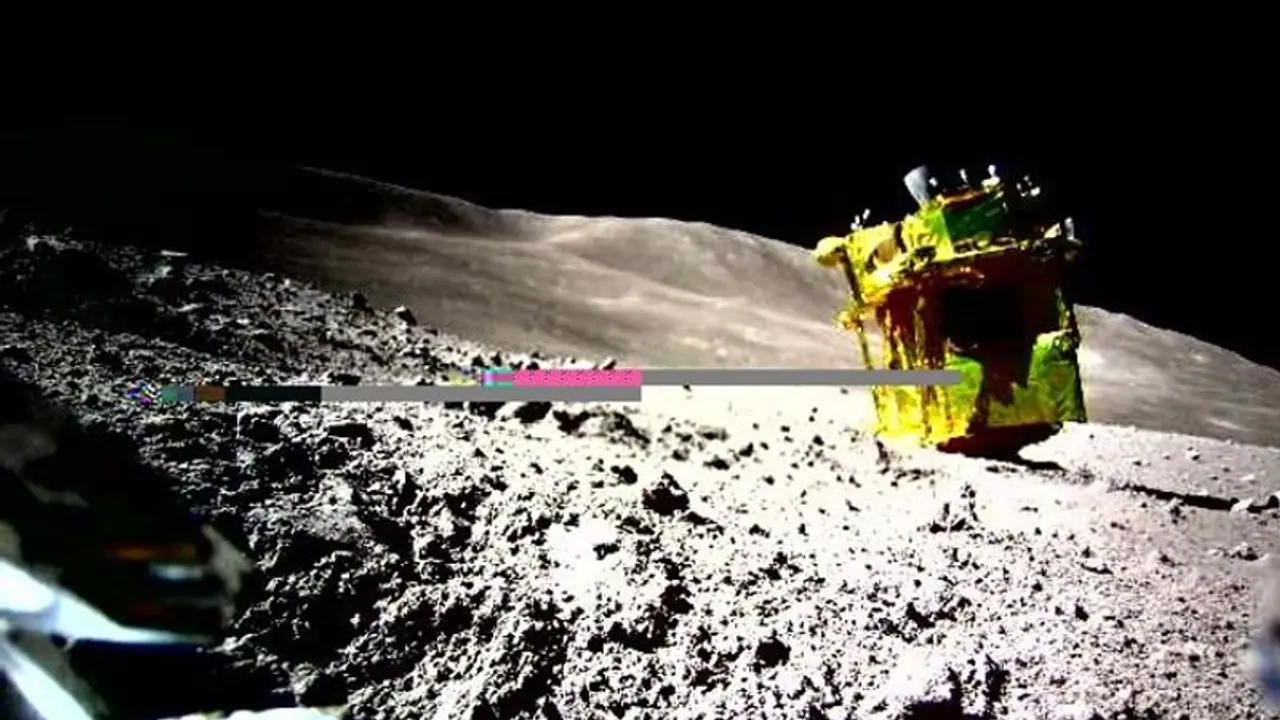"Last night, a command was sent to SLIM and a response received, confirming that the spacecraft has made it through the lunar night and maintained communication capabilities!," JAXA said on X, formerly Twitter, on Monday.
On Monday, Japan's space agency announced another unexpected development from its Moon lander. Following the two-week lunar night, the unmanned Smart Lander for Investigating Moon (SLIM) surprised scientists by reactivating, despite its initial wonky angle during touchdown last month, which had left its solar panels misaligned.

Benefitting from the shifting angle of the sun, SLIM resumed activity for two days, conducting scientific observations of a crater using its high-spec camera, as reported by the Japan Aerospace Exploration Agency (JAXA)
Once darkness enveloped the lunar surface again, SLIM returned to dormancy. JAXA, unsure of its capacity to endure the harsh lunar nights, was uncertain whether the lander would awaken.
"Last night, a command was sent to SLIM and a response received, confirming that the spacecraft has made it through the lunar night and maintained communication capabilities!," JAXA said on X, formerly Twitter, on Monday.
It said that communications with SLIM was "terminated after a short time, as it was still lunar midday and the temperature of the communication equipment was very high."
"Preparations are being made to resume operations when instrument temperatures have sufficiently cooled," it added.
On January 20, SLIM, also known as the "Moon Sniper" for its precision landing technology, successfully landed within its designated target zone, marking a significant achievement for Japan's space program.
Despite a series of recent setbacks, including engine issues during descent that resulted in the craft landing on its side with its solar panels facing west instead of upwards, the mission's success highlights Japan as the fifth nation to accomplish a "soft landing" on the Moon, joining the ranks of the United States, the Soviet Union, China, and India.
This recent development follows JAXA's celebration of a triumphant launch for its new flagship H3 rocket on February 17. This success comes after years of delays and two prior unsuccessful attempts, signifying a significant breakthrough for Japan's space exploration endeavors.
Several countries, including Russia, South Korea, and the United Arab Emirates, are currently pursuing missions to reach the Moon.
Recently, the first American spacecraft to venture to the Moon since the Apollo era, the uncrewed Odysseus lander, constructed by a private company and funded by NASA, touched down near the lunar south pole on Thursday. However, the spacecraft's manufacturer indicated that it likely landed sideways during its dramatic descent, even as ground controllers endeavor to retrieve data and surface photos from the mission.
In a similar endeavor, a private Japanese firm, ispace, endeavored to land on the Moon last year. Unfortunately, the probe experienced a "hard landing," resulting in the loss of contact with the spacecraft.
